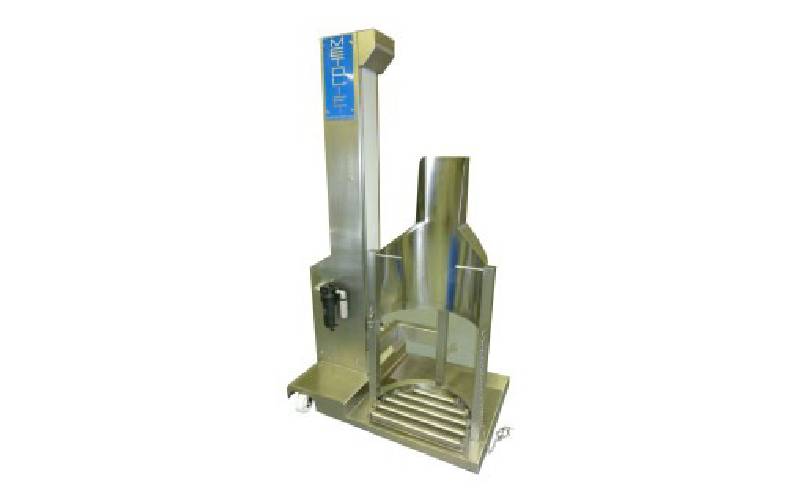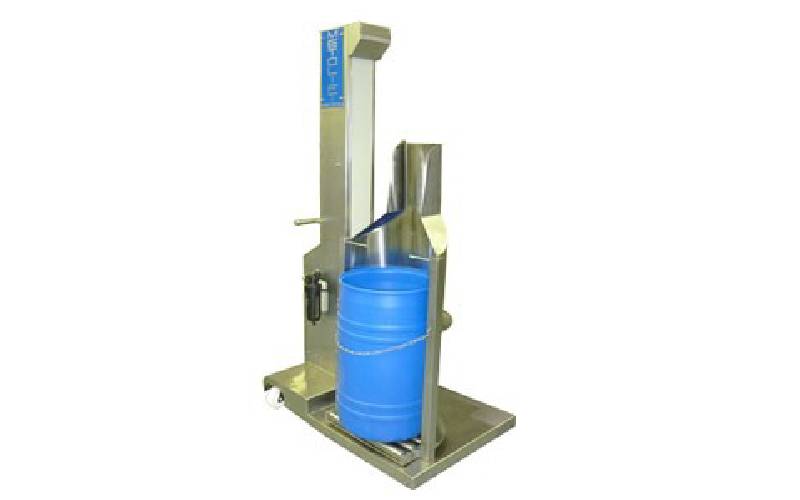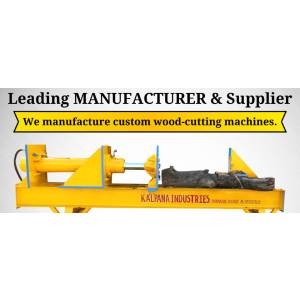In industries dealing with hazardous materials, the safe and efficient handling of drums is paramount to maintaining a secure work environment and ensuring regulatory compliance. Drum handling manipulators are specialized tools designed to facilitate the management of these drums, particularly when they contain dangerous or toxic substances. These manipulators play a crucial role in mitigating risks associated with the manual handling of hazardous materials by automating processes that would otherwise expose workers to potential hazards. By incorporating advanced safety features and ergonomic designs, drum handling manipulators enhance operational efficiency while prioritizing worker safety. The increasing complexity of industrial operations and stringent safety regulations underscore the importance of these manipulators in safeguarding personnel and ensuring smooth, compliant operations. This comprehensive exploration will delve into how drum handling manipulators are essential for safely managing hazardous materials, examining their design features, best practices, and innovations that contribute to a safer working environment.
Role Of Drum Handling Manipulators In Safely Managing Hazardous Materials
Drum handling manipulators are indispensable in environments where hazardous materials are handled, as they significantly enhance safety and operational efficiency. These manipulators are engineered to handle drums containing dangerous substances with precision and care, reducing the risks associated with manual handling. By automating the lifting, tilting, and moving of drums, these devices minimize the need for manual intervention, thereby reducing the likelihood of accidents and exposure to hazardous chemicals. Their ability to securely grasp and stabilize drums during transportation ensures that materials are managed without spills or leaks, which is crucial for maintaining a safe working environment. Furthermore, drum handling manipulators are designed to accommodate various drum sizes and weights, making them versatile tools that can adapt to different types of hazardous materials. Their integration into workplace safety protocols helps in meeting regulatory requirements and industry standards, ensuring that hazardous materials are handled in compliance with safety regulations. Overall, drum handling manipulators play a vital role in safeguarding workers and ensuring the safe management of hazardous materials in industrial settings.

Drum Handling Manipulators Enhance Safety Protocols For Hazardous Material Handling
Drum handling manipulators significantly enhance safety protocols by incorporating advanced features designed to address the specific challenges of handling hazardous materials. These manipulators are equipped with safety mechanisms such as secure clamping systems, controlled tipping angles, and spill containment features that mitigate the risks associated with hazardous substances. For instance, secure clamping systems ensure that drums are held firmly in place during movement, preventing accidental drops or spills. Controlled tipping angles allow for precise pouring or emptying of materials, reducing the risk of splashes and exposure. Additionally, many drum handling manipulators are designed with spill containment trays or catchment systems that capture any leaks or spills, preventing contamination and maintaining a clean work environment. The integration of ergonomic controls and automated features further enhances safety by reducing the need for manual handling, thereby minimizing the risk of strain injuries and accidents. By incorporating these safety features, drum handling manipulators contribute to more effective safety protocols, ensuring that hazardous materials are managed safely and efficiently while protecting workers and the environment.
Drum Handling Manipulators That Ensure Safe Handling Of Hazardous Substances
Drum handling manipulators are engineered with a range of design features specifically intended to ensure the safe handling of hazardous substances. Key design elements include robust clamping mechanisms, adjustable lifting heights, and precise control systems that collectively enhance safety and functionality. Robust clamping mechanisms are essential for securely holding drums in place during lifting and transportation, preventing accidental drops and spills. Adjustable lifting heights allow manipulators to accommodate various drum sizes and ensure that materials can be handled at the optimal height for safe operation. Precision control systems enable operators to manage the tipping and pouring of hazardous materials with accuracy, reducing the risk of splashes and exposure. Many drum handling manipulators also incorporate safety interlocks and emergency stop functions to provide an additional layer of protection in case of malfunctions or operator errors. The design of these manipulators often includes features such as corrosion-resistant materials and easy-to-clean surfaces, which are particularly important for handling hazardous substances that may cause damage or contamination. Overall, the thoughtful design of drum handling manipulators ensures that hazardous materials are managed safely and efficiently, supporting a secure work environment.
Best Practices For Protecting Workers From Hazardous Material Risks
Implementing drum handling manipulators effectively requires adherence to best practices that prioritize worker safety when dealing with hazardous materials. Key best practices include proper training for operators, regular maintenance and inspection of equipment, and the use of personal protective equipment (PPE). Operators should receive comprehensive training on the safe use of drum handling manipulators, including how to operate the equipment, handle hazardous materials, and respond to emergencies. Regular maintenance and inspection of drum handling manipulators are essential to ensure that they remain in good working condition and continue to function safely. This includes checking for signs of wear and tear, testing safety features, and addressing any issues promptly. Additionally, the use of appropriate PPE, such as gloves, safety goggles, and protective clothing, provides an extra layer of protection for workers when handling hazardous materials. Ensuring that drum handling manipulators are used in accordance with safety guidelines and manufacturer recommendations helps to minimize risks and maintain a safe working environment. By following these best practices, organizations can enhance the effectiveness of their drum handling manipulators and ensure that hazardous materials are managed safely and efficiently.
Innovations In Drum Handling Manipulators For Improving Safety
Recent innovations in drum handling manipulators have introduced advanced features that further enhance safety in hazardous material environments. These innovations include the integration of smart technology, advanced safety systems, and improved ergonomic designs. Smart technology, such as IoT connectivity and automated sensors, allows for real-time monitoring and data collection, providing valuable insights into equipment performance and safety. Automated safety systems, such as collision detection and automatic shutdown functions, help prevent accidents and ensure that manipulators operate within safe parameters. Improved ergonomic designs focus on reducing physical strain on operators by incorporating adjustable controls, ergonomic handles, and user-friendly interfaces. Additionally, innovations in materials and construction have led to the development of more durable and corrosion-resistant drum handling manipulators, which are essential for handling hazardous substances. These advancements contribute to a safer working environment by improving the reliability and functionality of drum handling manipulators, ensuring that they effectively manage hazardous materials while protecting workers and minimizing risks.
Drum Handling Manipulators On Compliance And Safety Standards For Hazardous Materials
Drum handling manipulators play a crucial role in helping organizations comply with safety standards and regulations for hazardous materials. By automating the handling process, these manipulators help to ensure that hazardous substances are managed in accordance with regulatory requirements, reducing the risk of non-compliance. Compliance with safety standards is essential for avoiding fines, legal liabilities, and damage to an organization’s reputation. Drum handling manipulators contribute to compliance by incorporating features such as spill containment, secure clamping, and precise control mechanisms that meet industry safety regulations. Their use also supports adherence to guidelines set by regulatory agencies such as OSHA, EPA, and other relevant bodies. Additionally, the integration of safety features and best practices in the operation of drum handling manipulators helps to maintain a safe working environment, further supporting compliance with safety standards. The positive impact of drum handling manipulators on compliance and safety underscores their importance in managing hazardous materials and ensuring that organizations operate within legal and safety frameworks.
Drum Handling Manipulators For Efficient And Safe Management Of Hazardous Materials
Customizing drum handling manipulators allows organizations to tailor equipment to their specific needs for the efficient and safe management of hazardous materials. Customization options can include adjustments to capacity, lifting height, clamping mechanisms, and additional safety features. For example, manipulators can be designed with adjustable arms and clamps to handle various drum sizes and types, ensuring compatibility with different materials. Customizable lifting heights enable manipulators to accommodate different storage configurations and processing requirements. Additional safety features, such as enhanced spill containment or specialized protective coatings, can be incorporated to address specific hazards associated with the materials being handled. Customization also extends to integrating drum handling manipulators with other equipment or automated systems to streamline workflows and improve efficiency. By investing in customized solutions, organizations can optimize their drum handling processes, enhance safety, and ensure that equipment meets the unique demands of their operations. Customizing drum handling manipulators provides a flexible approach to managing hazardous materials effectively while maintaining a focus on safety and operational efficiency.
Conclusion
Drum handling manipulators are critical tools for the safe and efficient management of hazardous materials across various industrial and commercial settings. Their advanced design features, including secure clamping systems, ergonomic controls, and automated safety mechanisms, enhance operational efficiency while prioritizing worker safety. By automating the handling process, these manipulators reduce manual labor and exposure to hazardous substances, contributing to a safer work environment and improved regulatory compliance. Innovations in drum handling manipulators, such as smart technology and customizable options, further enhance their effectiveness and adaptability to different operational needs. Implementing best practices and adhering to safety standards are essential for maximizing the benefits of drum handling manipulators and ensuring their successful integration into hazardous material management processes. Overall, the use of drum handling manipulators represents a significant advancement in the safe and efficient handling of hazardous materials, supporting both workplace safety and operational excellence.


